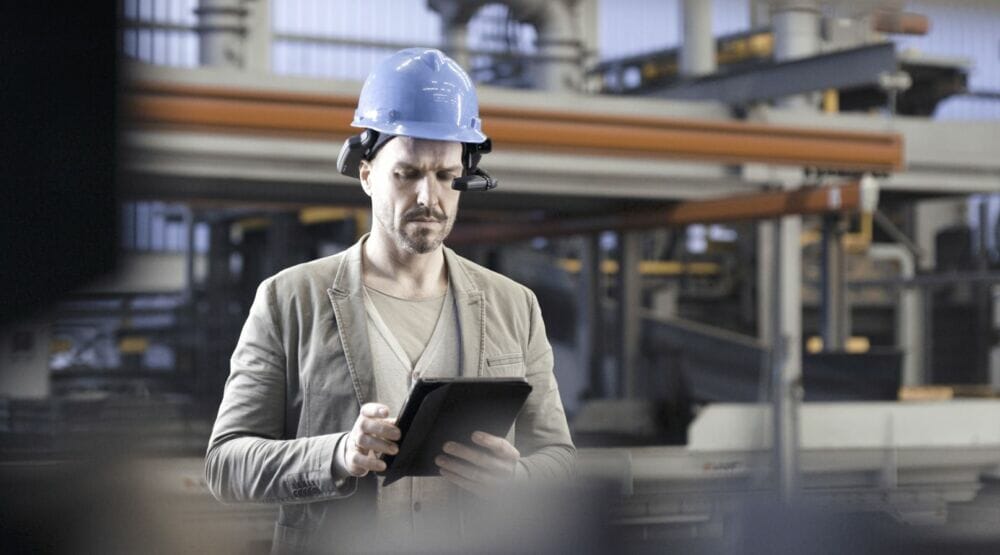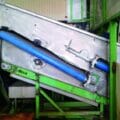By Andy Graham, Solutions Manager, SolutionsPT
The Internet of Things (IOT) refers to the huge and ever-growing network of intelligent devices and computers that are connected and sharing vast amounts of real time data. When we talk about the Industrial Internet of Things, we’re referring to the same general ideas as above, but Industrial IoT refers more specifically to the devices, processes and people associated with industries like manufacturing and infrastructure.
Microsoft showed 13 billion connected IoT devices by 2021, with this number set to increase by 2022, the implications are vast and far-reaching.
IoT is more for improving our everyday life (think smart homes and Alexa) whereas IIoT devices and services handle critical industrial and plant floor operations and are used to collate valuable data.
Incorporate IIoT technology into your organisation and you can create-game changing operational efficiencies. Here’s how that’s happening.
Using Industrial IoT to your advantage
Predictive maintenance to reduce downtime
The wider manufacturing industrial companies are finding effective uses for industrial IOT as part of Industry 4.0. One of the most effective is predictive maintenance. IIoT enables easier, non-intrusive implementation of the right sensors so we can take advantage of these latest technologies. This is becoming increasingly apparent in older assets we have become so reliant upon.
There’s no need to wait until a machine needs to be repaired to carry out vital fixes. By using predictive analytics, we can identify a machine’s future problems and act accordingly.
It’s more than just identifying an old piece of kit that’s on the cusp of dying. It’s using machine learning analysis and multiple sensor points to collate the necessary data and predict failure months in advance. This reduces unplanned downtime, lowers the costs of unnecessary maintenance, and keeps things running along smoothly.
The same concept applies to operational efficiency and real-time business decisions. For example, the right people can receive a notification when a certain line is consuming more energy or raw goods than usual. Issues can be rectified quickly and easily before they can escalate into unsuspecting, spiralling costs or the quality of the finished products.
Intelligent Edge to Drive Growth
The term Intelligent Edge or Edge Computing in its simplest terms refer to the connected systems and devices that are collecting data, locally at the edge. Domestically, it could be your house but, in this case, we’re looking at your plants and control rooms. Instead of Smart Home we now have a Smart Factories.
The information you’re collating via sensors and data points is processed and analysed by systems to provide deeper insight into your processes. These insights are then presented in context so you can make intelligent decisions which can drive growth.
In practice, this could look like a manufacturer who makes condiments linking digital price displays to their production levels via a shared network.
So, they could better track inventory and on average how long it takes for their products to sell. Once this information is integrated with other data sources (like the weather forecast), then a manufacturer has all the information they need to determine buyer behaviour and adjust stock levels accordingly.
This is just one example of a manufacturer using their newly integrated IIoT devices to maximise sales, reduce shipping costs and meet shifting consumer demand.
Keeping up with the competition
Those sensors and IIoT devices we mentioned a little earlier are rising in use, popularity and, crucially, falling in cost. The average cost of a sensor in 2018 was just 44 cents which represents a 200% decrease from 2004. The very nature of IIoT solutions also reduces implementation costs in comparison to standard PLCs and devices.
So, manufacturers have access to these sensors and they’re putting them to good use. The industry is more connected than ever thanks to Industrial IoT and the byproduct of advanced data processing.
The IT systems that are most often used for data-centric computing are converging with their OT counterparts that are used to control and monitor processes and devices. This means more information, deeper insight, and smarter industry operations as a result.
Cloud connected IIoT sensors can help manufacturers gain the benefits of a connected system without having to spend a lot of money on creating expensive infrastructure.








